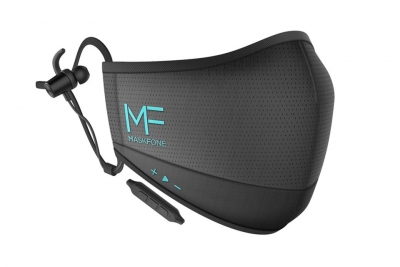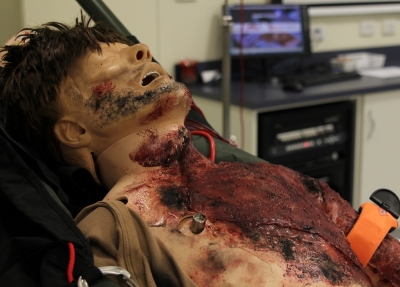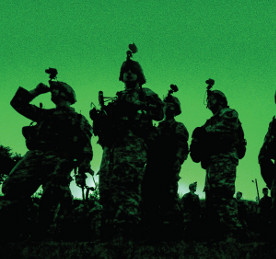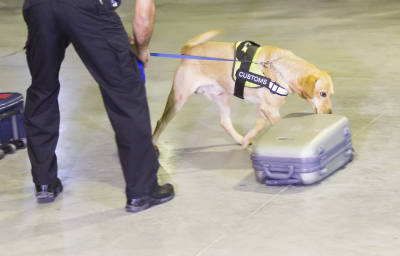
On the afternoon of July 4, 1956, Mrs. Beatrice Weinberger brought her month-old baby, Peter, back from an outing near their home in Westbury, Long Island, USA. She left the pram on the patio of her house and hurried inside to get the baby a clean nappy. When she returned a few moments later, the pram was empty – and a scrawled note was lying where Peter had been.
The note said: ‘Attention. I’m sorry this had to happen, but I’m in bad need of money, and couldn’t get it any other way. Don’t tell anyone or go to the police about this because I am watching you closely. I’m scared stiff, and will kill the baby at your first wrong move.
‘Just put $2000 (two thousand) in small bills in brown envelope, and place it next to the signpost at the corner of Albemarle Rd. and Park Ave. at exactly 10 o’clock tomorrow (Thursday) morning.
‘If everything goes smooth, I will bring the baby back and leave him on the same corner “Safe and Happy” at exactly 12 noon. No excuse, I can’t wait! Your baby-sitter.’
Despite the kidnapper’s warning. Mr. and Mrs. Weinberger, frantic with worry, contacted the police.
A dummy parcel containing cut-up pieces of newspaper was placed on the corner the following morning. But the kidnapper did not show up. He failed to keep two other ‘appointments’ with the Weinberger, and left a second note signed ‘Your baby-sitter’. By then, police felt that the baby was no longer alive.
The FBI was called in and the Bureau’s handwriting experts set to work to try to track down the kidnapper. In both the ransom notes an unusual z-shaped stroke was placed at the front of the y in words such as ‘money’ and ‘baby’.
Starting with New York State Motor Vehicle Bureau, the analysts spent the next six weeks combing through local records and at probation offices, work places, factories, aircraft plants, clubs and schools.
Altogether, more than 2 million signatures and handwriting samples were examined by eye and compared to the writing on the ransom notes.
Then, in the middle of August, the experts’ painstaking efforts paid off. The handwriting of Angelo John La Marca, of Plainview, Long Island, matched that of the kidnapper’s – especially in the peculiar formation of the y’s.
Some time previously La Marca had been put on probation for making illegal alcohol. On being shown the handwriting samples, he broke down and confessed to the kidnapping of baby Peter.
It had been a super-of-the-moment crime, he stated, committed to ease his financial problems. He told the police he had left Peter alive and well in a nearby park on the day after the kidnapping. But when officers hurried to the spot, all they found was the infant’s dead body. La Marca was later executed in New York’s Sing Sing Prison.
Even if La Marca had tried to disguise his handwriting he probably would still have been caught.
No matter how hard someone may try to disguise handwriting quirks and characteristics – or adopt those of somebody else – the ‘individuality’ of the writer shows through. The very angle at which he or she holds a pen; the way a t is crossed and an I is dotted; the height and size of capital and small letters; the amount of space between words; the use (or misuse) of punctuation marks. All these can identify a person as surely as fingerprints.
In 1983 Gary Herbertson, the head of the FBI laboratory’s document department, stated: ‘Any time you try to change your handwriting; you do things that look unnatural. A forger’s writing doesn’t have the speed, fluidity, the smoothness of natural writing.
‘You can see blunt beginnings and ends of strokes, rough curves, inappropriate breaks, little tremors. Two letters may be the same shape, but you can tell if one’s written quickly and the other is carefully drawn.’
In addition to their knowledge, handwriting experts use sophisticated instruments and machines in their work. These include infrared and ultraviolet scanning devices with which they look beneath erasures and changes; spilt-screen equipment for comparing dubious documents with genuine ones; and tools for greatly magnifying handwriting and comparing different ways of joining up letters.
The most notorious handwriting case in recent times involved the forgiving in the early 1980s of the ‘diaries’ of Adolf Hitler – committed his innermost thoughts in an antiquated German script. They included an entry on the Russian attack on Berlin in April 1945, when – in his bunker hide-out – Hitler allegedly wrote: ‘The long-awaited offensive has begun. May the Lord God stand by us.’
The 60 diaries were bought by the German weekly news magazine Stern for a reputed 6 million marks. Stern then sold subsidiary rights in France, Spain, Belgium, Holland, Italy, Norway and England – where extracts were published in the Sunday Times.
Publication in Germany began in the spring of 1983. And two of the diaries – from 1932, the year before Hitler became dictator, and 1945, the year of his suicide – were sent to the American magazine Newsweek, which was also interested in publishing them.
The magazine called in a leading handwriting expert, Kenneth Rendell, of Boston, Mass – who was immediately suspicious. ‘Even at first glance,’ he stated, ‘everything looked wrong.’
Using a powerful microscope and samples of Hitler’s genuine handwriting, he compared the two sets of writing – particularly the capital letters E, H and K – and found major discrepancies and dissimilarities between the two. These convinced Rendell that the diaries were fakes. In addition, the ink proved to be modern; and Hitler, when he had made notes and records in the early 1930s, had used only the finest quality, gold-embossed paper. He would not have resorted to the sort of cheap, lined notepaper on which the fake diaries were written.
As a result of the expose, a German criminal with a string of convictions – Konrad Paul Kujau – was later arrested along with two accomplices and tried for forging the diaries. In July 1985 he was found guilty by a Hamburg court and sentenced to four and a half years imprisonment. Once again, the handwriting expert had exposed the handwriting cheat.
Picture Credit : Google














